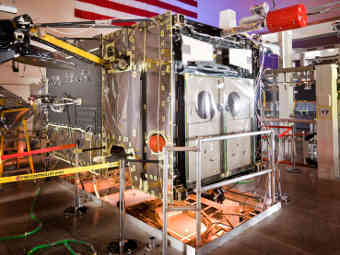Washington. February 6. INTERFAX - The new American satellite of the missile attack warning System (SPRN) SBIRS GEO 5 has begun to perform operational tasks after the completion of the testing period in orbit, the US Space Operations Command announced on Sunday.
"The Space Operations Command recognized the geosynchronous space satellite of the infrared system as suitable for operation and handed it over to the US Space Command for operational use," the report says.
The SBIRS GEO 5 spacecraft was launched into orbit by an Atlas 5 rocket in May last year using the Atlas 5 heavy launch vehicle of ULA, which is a joint venture of Boeing and Lockheed Martin corporations, carrying out launches in the interests of the Pentagon.
This is the ninth satellite of the space-based infrared monitoring system, which has been launched to replace outdated US space launch vehicles.
In addition to monitoring the launches of ballistic missiles, the new generation system is designed to determine the trajectory of their flight, identify combat units and false targets, issue target designation for interception, as well as conduct reconnaissance over the territory of military operations in the infrared range.
Now the deployed orbital grouping consists of five SBIRS GEO geostationary satellites and four upper-echelon satellites in highly elliptical SBIRS HEO orbits, which monitor rocket launches around the clock.
This year, the Pentagon also plans to launch the sixth SBIRS GEO satellite.
The SBIRS GEO-5 and SBIRS GEO-6 SPRN satellites will increase control over ballistic missile launches in the world. The cost of each such 4.5-ton spacecraft created by Lockheed Martin and Northrop Grumman corporations is almost $2 billion.
At the end of December 2020, the US Congress allocated $130 million to the Missile Defense Agency to develop a new satellite constellation capable of tracking hypersonic missiles as well.
Satellites placed in low-Earth orbit must detect and provide targeting data for hypersonic missiles, which are practically invisible compared to conventional ballistic missiles and can maneuver. According to the US military, such an orbital grouping will close the current gap in the US missile defense system.
According to available data, the first batch of 20 such sensor satellites may be launched into orbit in 2021. And in a year it is planned to deploy another 150 vehicles in orbit.
Currently, work on the creation of a satellite known as Hypersonic and Ballistic Tracking Space Sensor (HBTSS), a hypersonic and ballistic space tracking sensor, is being conducted by the Missile Defense Agency and the Agency for Space Development of the US Department of Defense. In January, L3Harris ($122 million) and Northrop Grumman ($155 million) received contracts for satellite development.

